With a painting career that spans an astonishing sixty years, Juris Cerins has consistently produced work
that shows evolution, but he has never deviated from the underlying fascination of vigorous abstract landscape. While investigating this genre Cerins is associated with the European tradition of painting.
It seems that the focus on landscape would influence an artist to be a voyager, but there is a twist to how
he works. Cerins always takes the content directly from familiar natural surroundings where he lives or stays. Such organic connection stems from his first immersion into the Australian landscape in and around the creeks and paddocks of the Bathurst migrant camp as the child of a Latvian refugee family in the early 1950s. Now, he has made his base amidst the beautiful bushland on the Otways edge in Lorne. It is here the artist records aspects of the place where he has lived for the last two decades.
Cerins’ style decisively engages with idiosyncratic subjects and artistic desires. He leads a rather secluded and simple lifestyle involving ample work to be done outdoors and regular wanderings into the bush.
This nevertheless shapes and nourishes his unusual perspective. Over the years, Cerins painting has evolved from a kind of cartographic mapping to intense webs, overlays, and brilliant details. Observation is the material for the gestural language which Cerins explores as an ongoing line of conversation. It is possible
that countless factors have contributed to it – from memories of looking at frescoes in Naples, at the age of eight, and at prints on the walls at his parents’ home, to appreciating handwriting and learning from influences such as the painter Ian Fairweather.
Cerins’ painting occupies the intersection of two modalities – detail and structure on one side, and buoyant exhilaration and freedom on the other. The latest work – included in the 2023 exhibition at Qdos fine arts – speaks of the intention to be unrestrained, while exploring new topographies marked by road signs and text that enliven the visual domain. His works appear to scan a scene, registering each detail through a personal lens but fully endorsing its own autonomous vitality. This relational exchange for me exemplifies art, that writer Lucy R. Lippard differentiates as being of place rather than about place.[1] His painting is somehow specific of place yet enigmatic, like a code that inscribes information into the materiality of canvas.
It’s revealing then to consider that Cerins’ process involves several stages beginning on location. Exploring the locality on foot and by observation, studying the fabric and textures of his surroundings before developing a gouache on paper. This may require returning to the site several times – not to look around
but to just be there and complete the painting. In the studio, he begins a piece on canvas using the gouache as a reference, however, only for the early stages. At that part of the process, he delves into the emerging painting, building layers with brushes, rags, cardboard, and hands, – taking time and a painstaking approach. Cerins has said: “The act of painting on location is cathartic. With each brush mark one becomes more familiar with the locality. The grasses and tussocks have over the years woven a pattern which is perfectly unified and, interestingly, motifs are not repeated. A prosaic observation, but then it is the prosaic that has always caught my attention.”[2]
Regarding the prosaic, an obvious link comes into my mind knowing that it is common in Latvian culture to have the position of care and respect for every tiny part of nature. This knowledge and practice are captured in folk poetry and songs sung on varied occasions that have been a part of the artist’s life growing up.
We both share the cultural traditions along with the Latvian language. In our conversations, he has noted the importance of ancestral reverence of nature even admitting that he has deeper affinity with the Australian, rather than the Latvian landscape. Also, there is a strange mystery present in considering the result of serendipitous cultural encounters due to people’s journeys to escape a cultural oppression in their homeland. Take, for example, the work of photographer Peter Dombrovskis, also the offspring of a postwar migrant family from Latvia, whose representations of Tasmanian wilderness in the 1980s famously spoke to the hearts of people and helped save the Franklin River from destruction by the building of a dam. The late Tasmanian artist had a similar need to be engaged with nature. Cerins, who feels a particular connection with Dombrovskis because of that, has reasoned that for someone with a Latvian or Baltic heritage walking in amongst bush and grasslands imparts a feeling of newfound comfort and freedom. Cerins’ achievement is the ability to use an immersed sensibility to elevate the prosaic.
Cerins has developed a firm footprint in the milieu of Australian landscape painting. His bold work with its distinctive mark making reflects his long and ever deepening relationship with landscape.
– Marita Batna, art curator and researcher
[1] Lucy R. Lippard, The Lure of the Local: Senses of Place in a Multicentered Society, New York: The New Press, 1997.
[2] Juris Cerins, “On Location,” Oz Arts, 1994: 111-113.
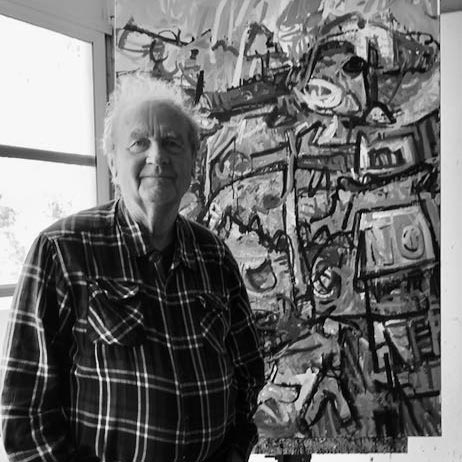
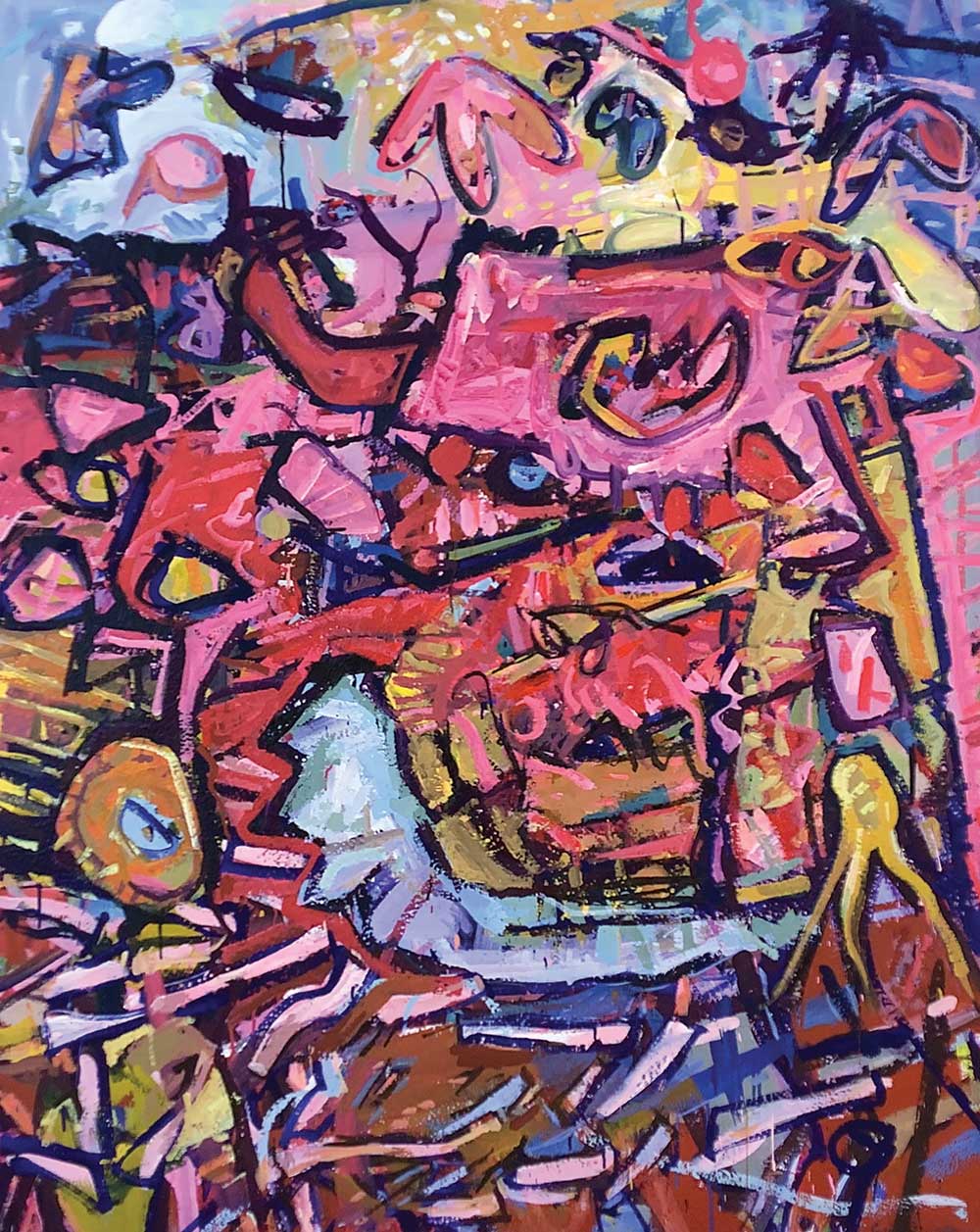
Estuary 2023 acrylic on linen 152 x 122cm $4900
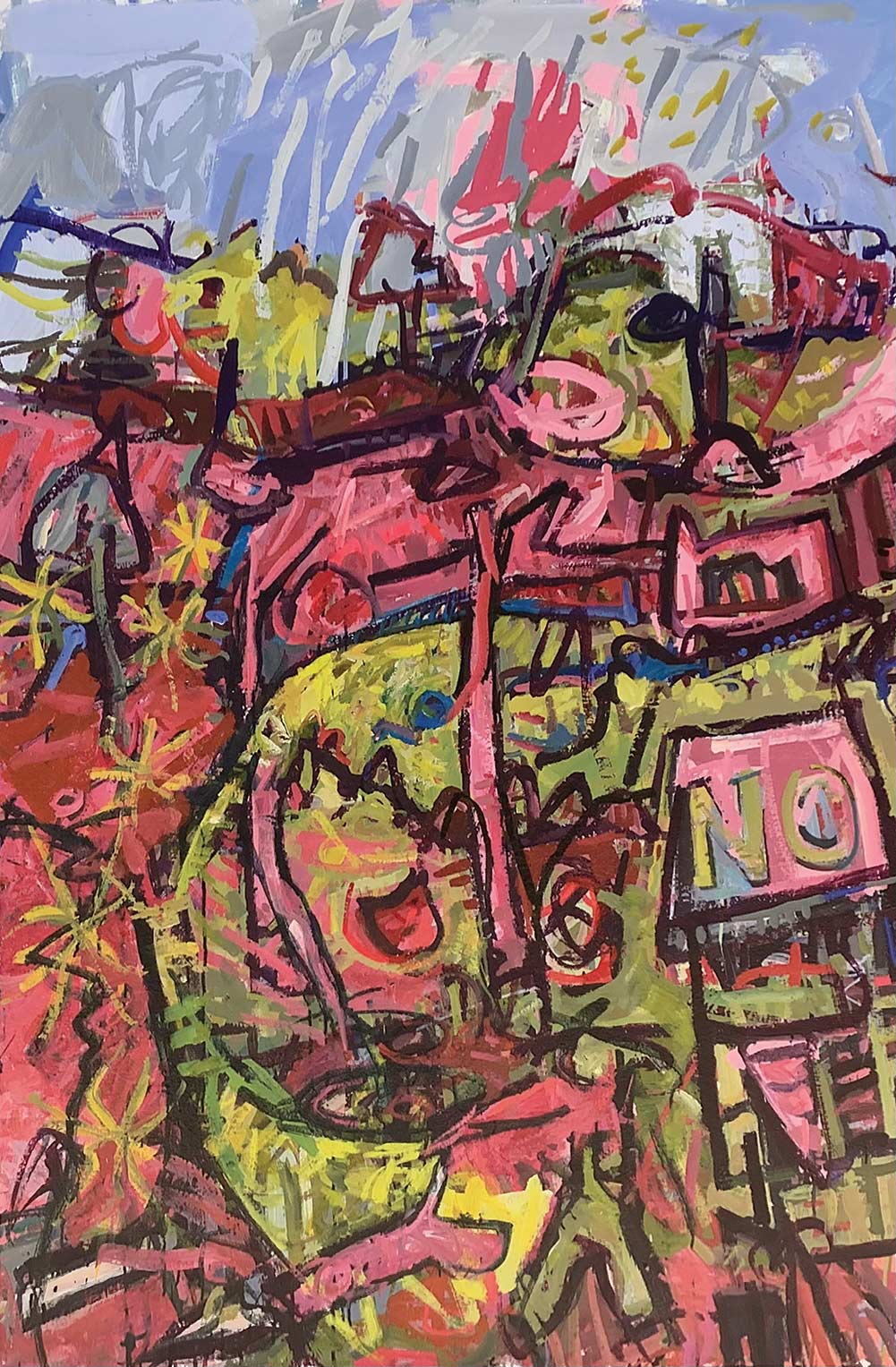
Park Entrance 2023 acrylic on linen 152 x 101 cms $4600
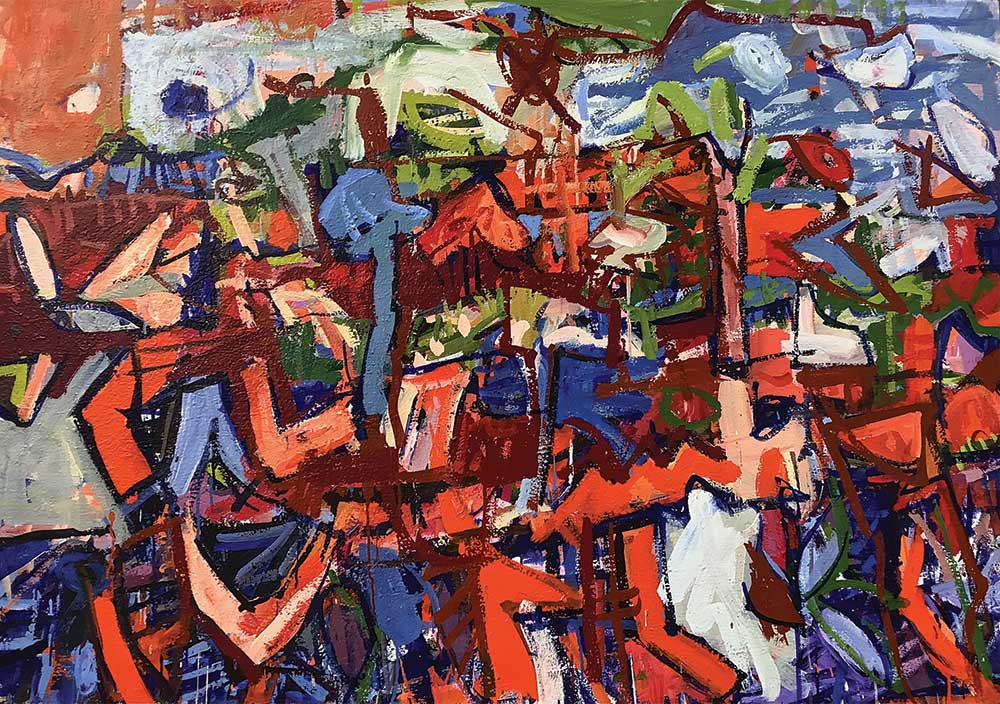
Coastal Hillside 2023 acrylic on linen 106 x 152 cms $4850

Ocean Edge 2023 acrylic on linen 97 x 138 cms $3500
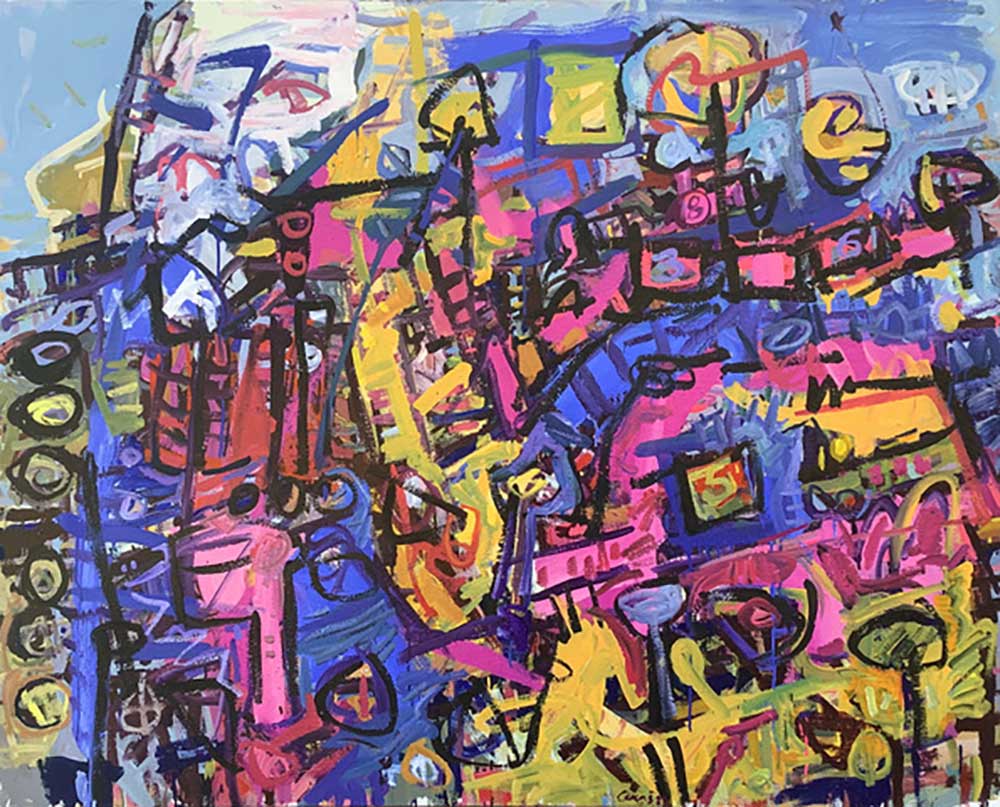
Geological Puzzle 2023 acrylic on linen 152 x 122 cms $4900
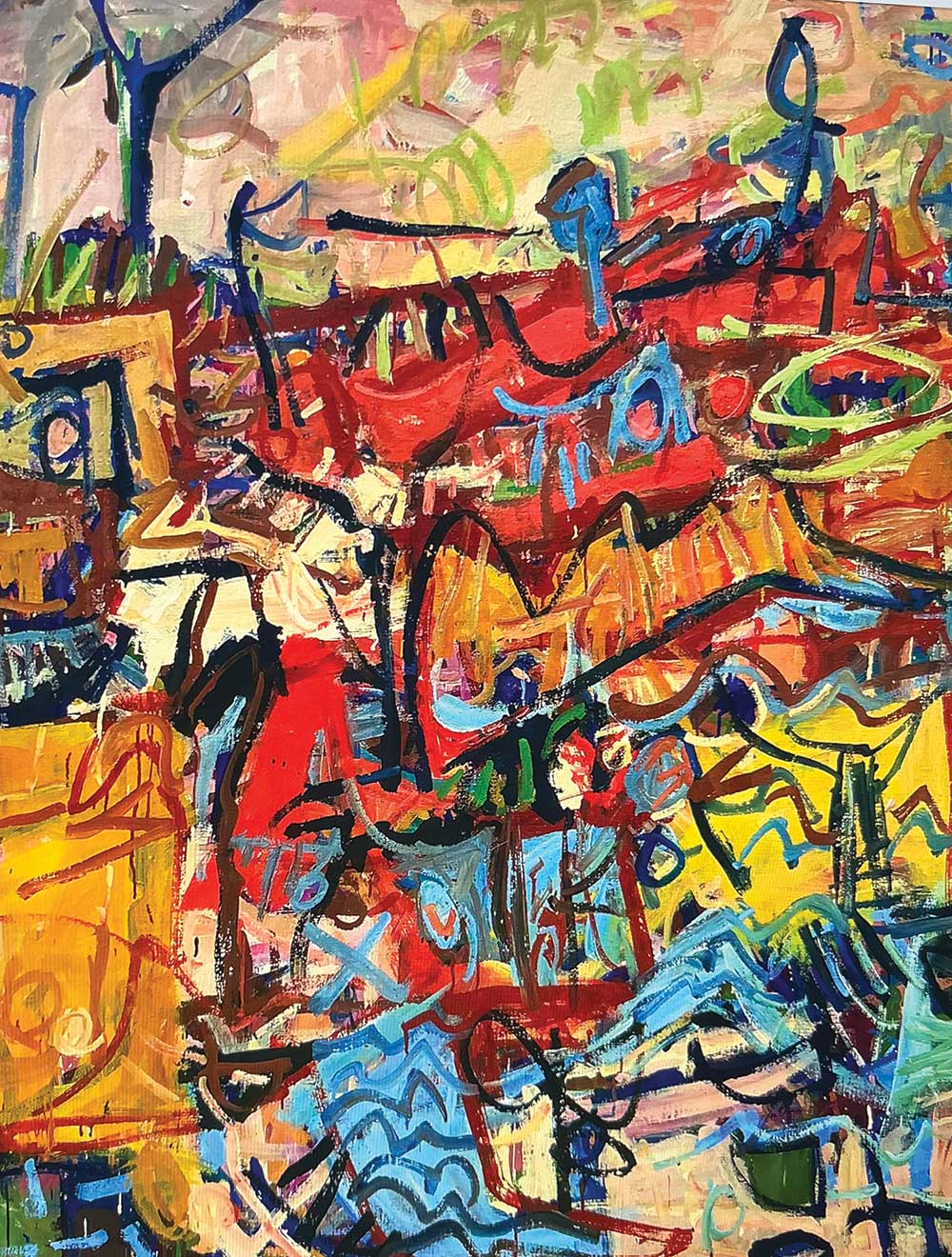
King Parrot Speakers Country acrylic on linen 152 x 122 cms $4900
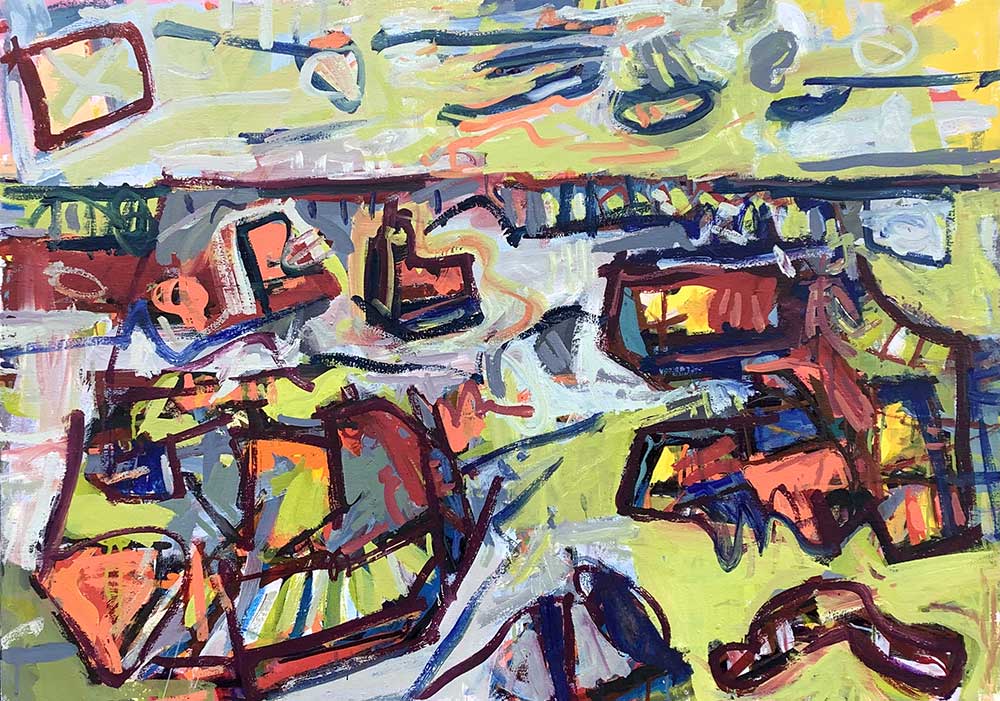
High Tide 2023 acrylic on linen 78 x 110 cms $3000
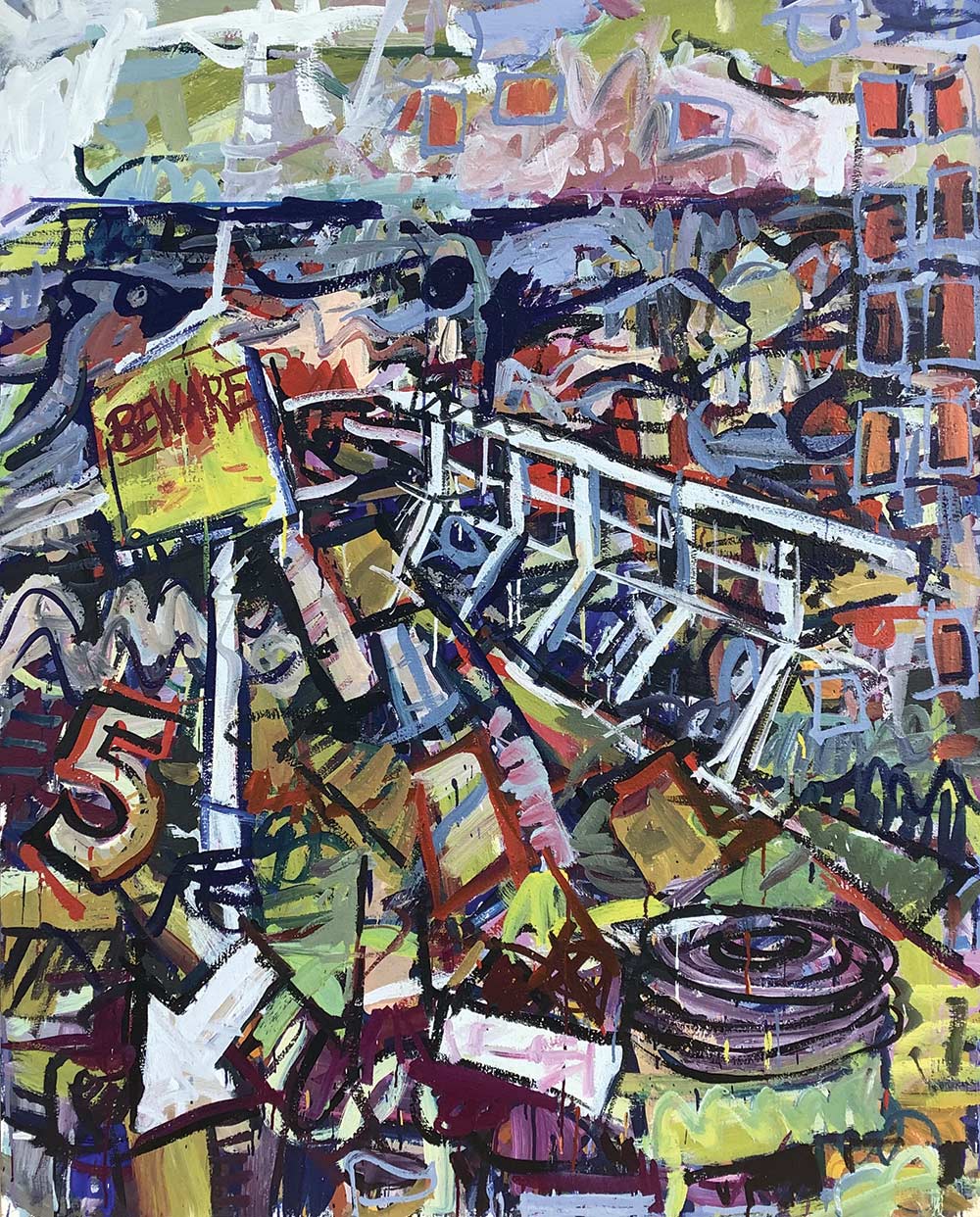
Pier 2023. acrylic on linen 152 x 122 cms $4900
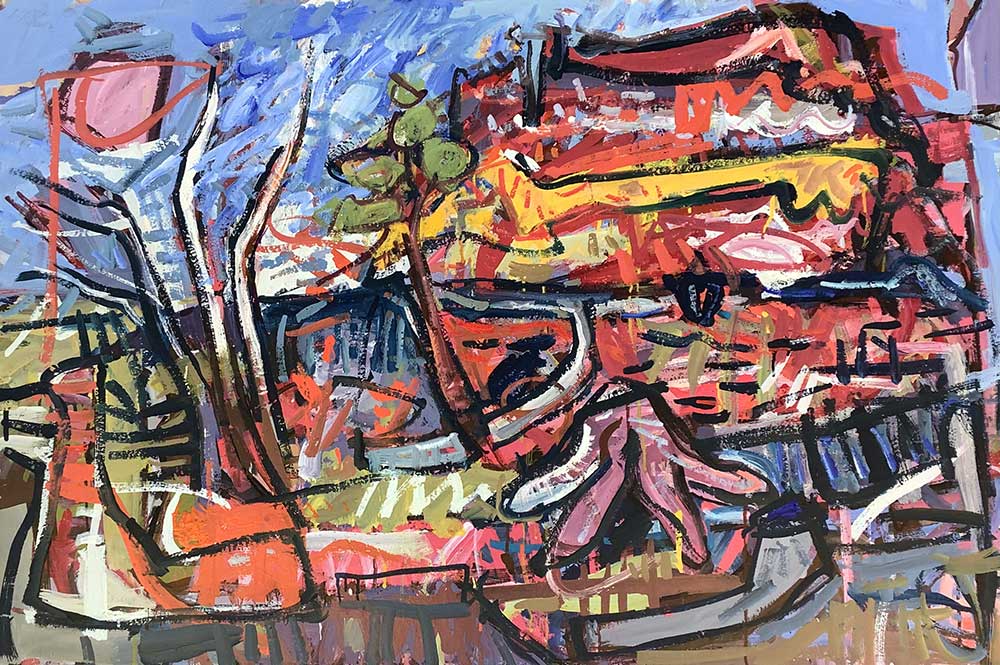
Erskine River Bank 2023. acrylic on board 83 x 122 cms $2900
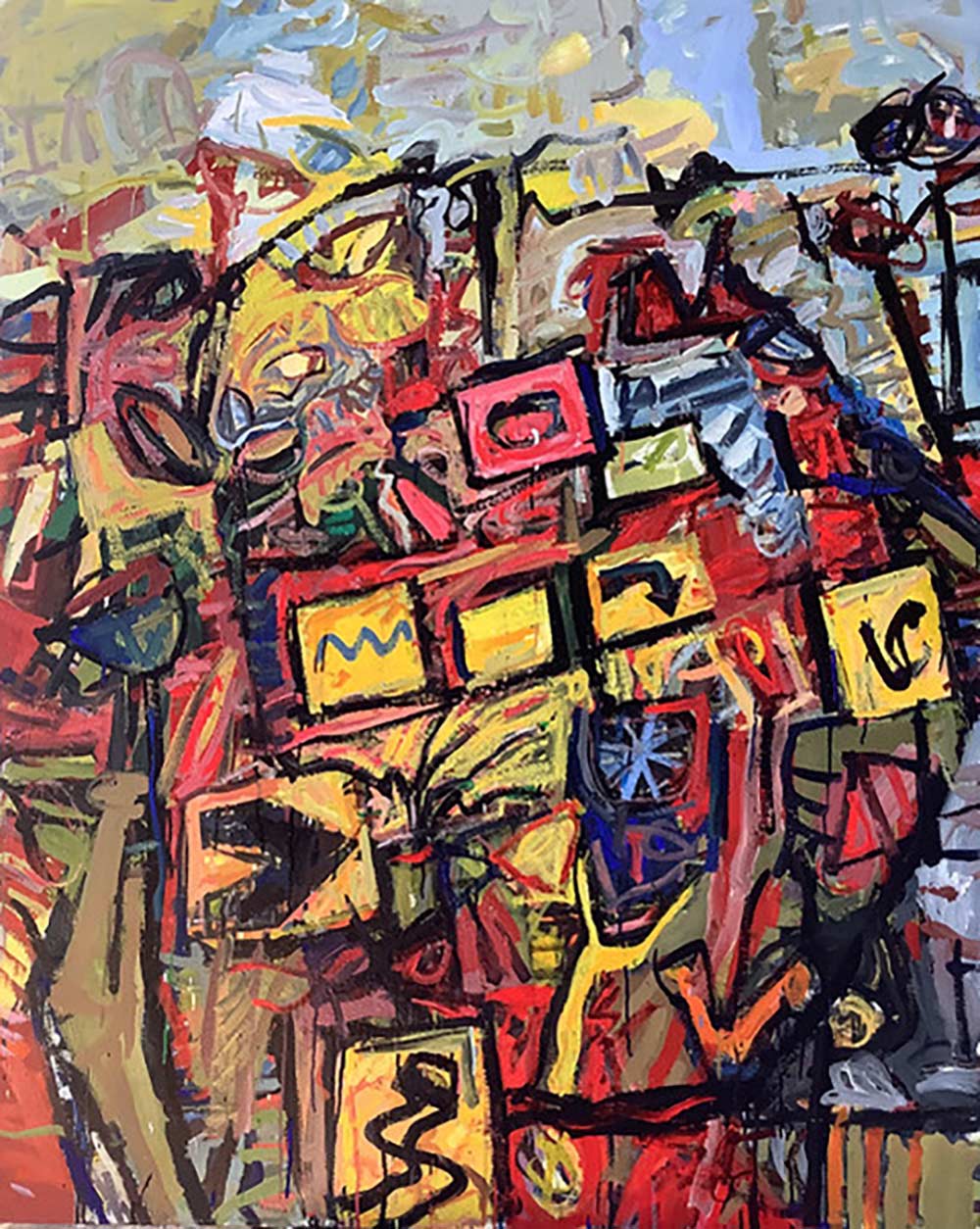
Approaching Lorne 2023. acrylic on linen 1 52 x 122 cms $4900
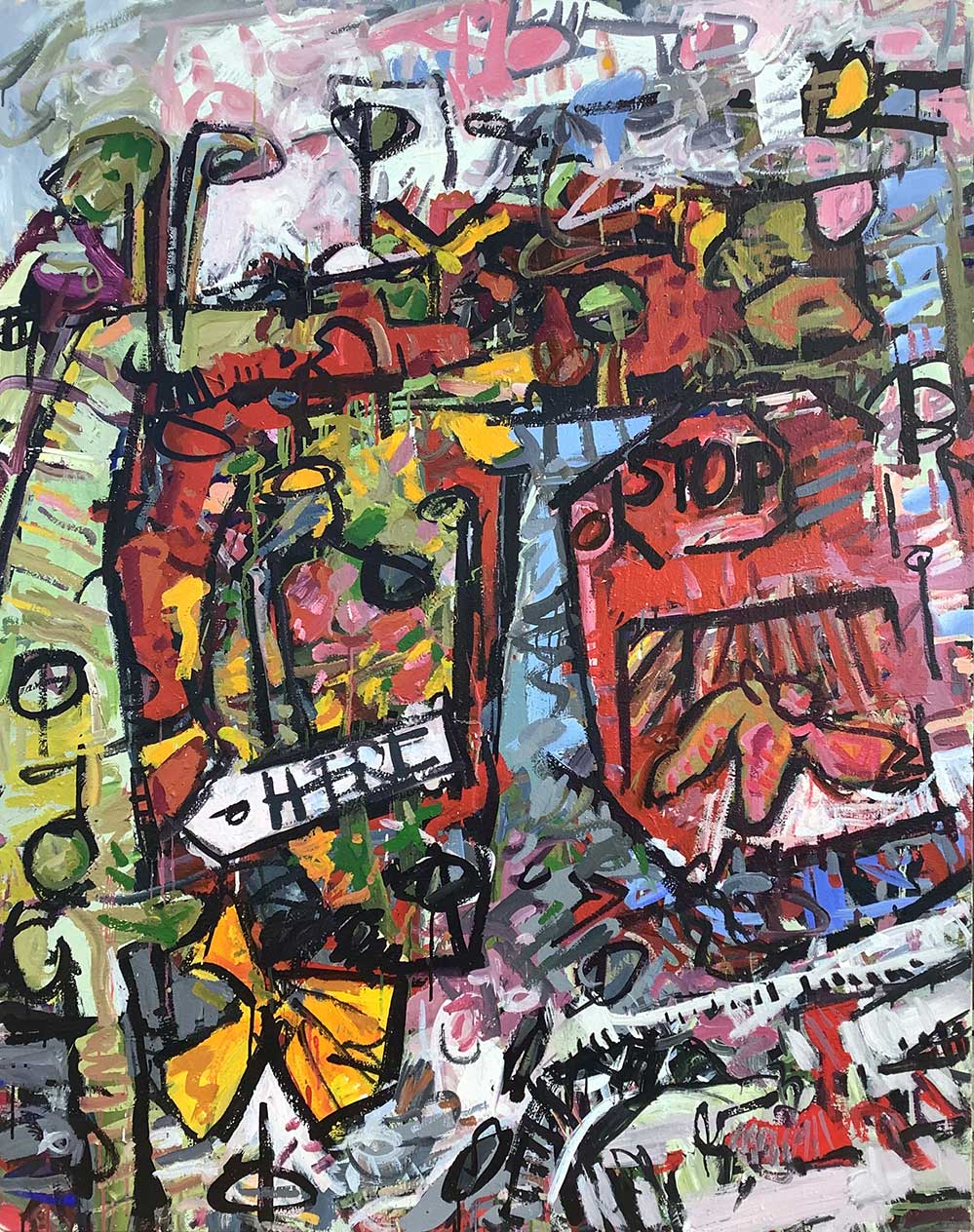
Hird Street acrylic on linen 152 x 122 cms $4900
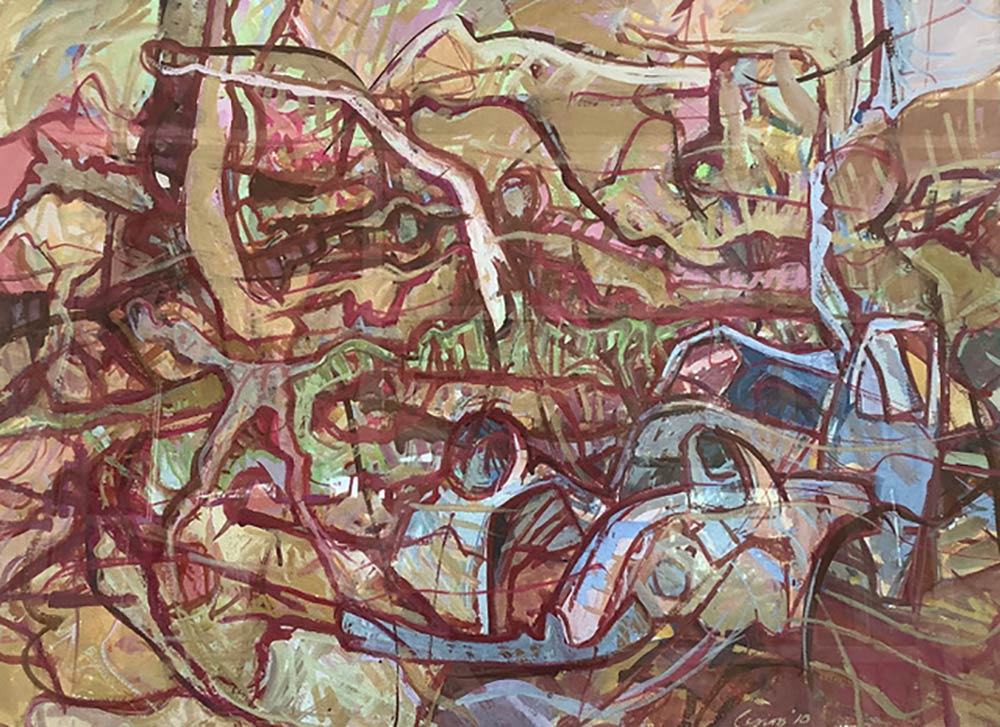
Abandoned 2010 gouache on paper 56 x 76 cms $1650
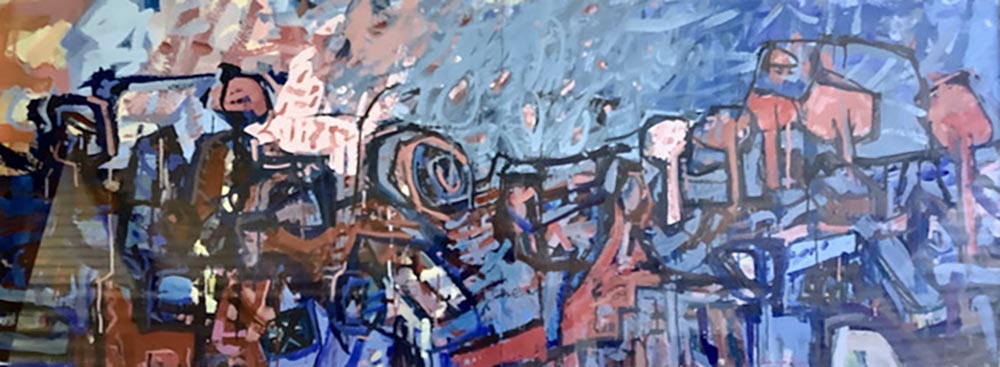
Road Works 2020 gouache on paper 56 x 150 cms $2800
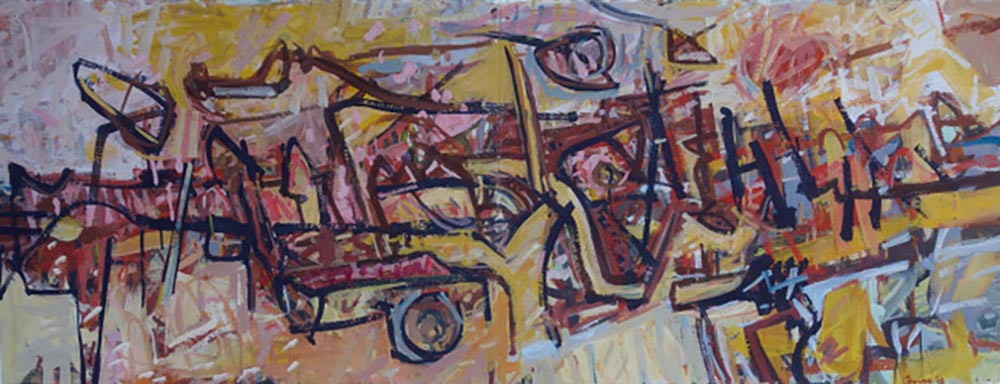
Coolabah Farm Yard 2018 gouache on paper 56 x 150 cms $2800

Hillside 2023 gouache on paper 56 x 150 cms $3000
